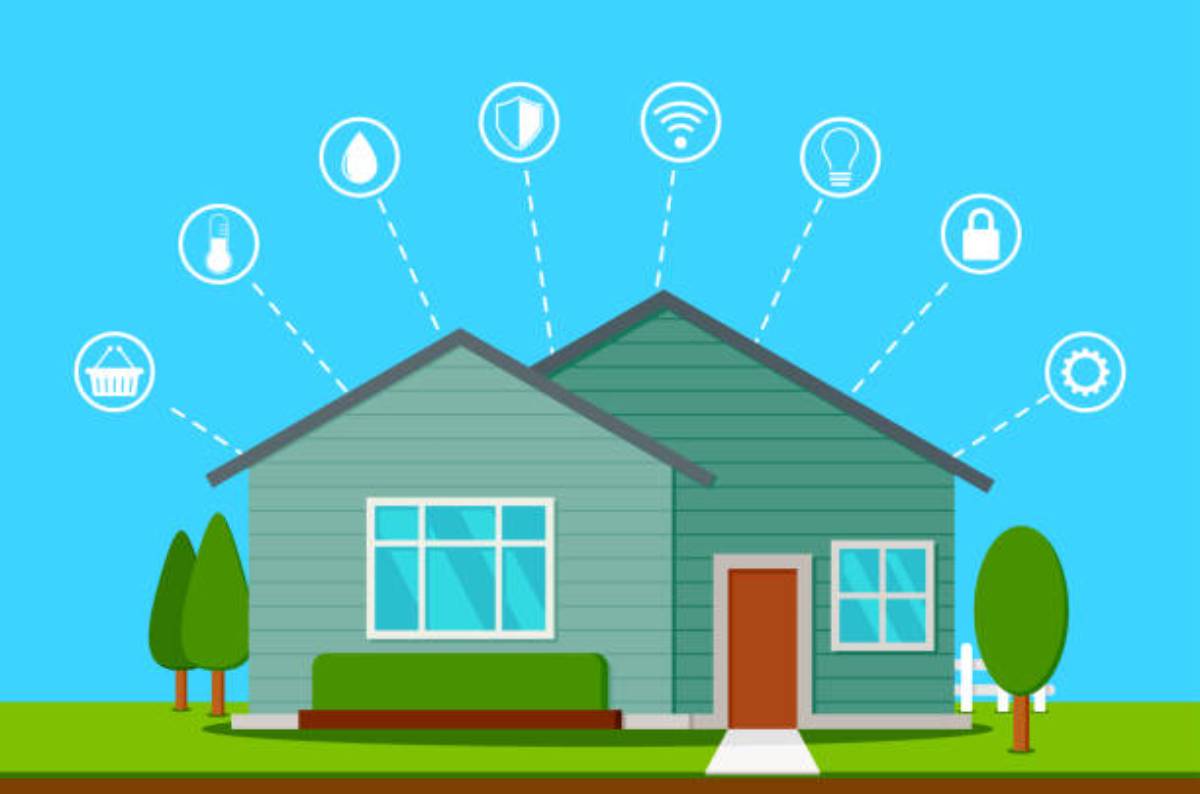

Smart homes are increasingly popular in American suburbs due to the convergence of technological advancements, changing lifestyles, and evolving consumer preferences. These homes offer enhanced security, energy efficiency, and convenience, making them attractive to modern homeowners seeking a seamless living experience. This article delves into the factors driving the adoption of smart home technology in suburban America.
In recent years, smart homes have transitioned from luxury novelties to mainstream necessities, especially in suburban areas across the United States. Nearly half of American homes are now equipped with at least one smart device, with younger consumers—those aged 18-34 and 35-49—leading the adoption.
The suburban shift, accelerated by the COVID-19 pandemic, has prompted many to seek homes that offer both comfort and technological sophistication. This trend is evident in cities like Ames, Iowa, which boasts a high density of smart homes per 1,000 listings.
1. Enhanced Security Features: Smart homes provide advanced security systems, including video doorbells, motion sensors, and remote monitoring capabilities. These features offer peace of mind, particularly in suburban neighborhoods where residents value safety and community well-being.
2. Energy Efficiency and Cost Savings: Devices like smart thermostats and energy monitoring systems help homeowners optimize energy use, leading to reduced utility bills. Smart thermostats can learn household patterns and adjust temperatures accordingly, ensuring comfort without unnecessary energy consumption.
3. Convenience and Automation: Automation of daily tasks, such as adjusting lighting, controlling appliances, and managing home security, simplifies life for homeowners. Voice-activated assistants and smartphone apps enable remote control, adding layers of convenience.
4. Increased Property Value: Homes equipped with smart technology often have higher market values. Prospective buyers are increasingly seeking properties that offer modern amenities, and smart features can make a home more appealing in a competitive market.
1. Smart Neighborhoods: Communities are developing infrastructure to support smart homes, including high-speed internet access and integrated energy solutions. These smart neighborhoods aim to provide sustainable living environments that cater to the technological needs of residents.
2. Collaboration with Tech Companies: Partnerships between local governments and technology firms are fostering the development of smart communities. These collaborations focus on implementing solutions that enhance urban living, such as smart traffic management and energy-efficient public services.
1. Privacy Concerns: The integration of smart devices raises questions about data security and user privacy. Homeowners must be vigilant about the information shared with devices and ensure that their networks are secure.
2. Compatibility Issues: With a plethora of smart devices available, ensuring compatibility between different brands and systems can be challenging. Standardization efforts are ongoing to address these issues and provide seamless integration.
3. Initial Costs: The upfront investment for smart home technology can be significant. However, many homeowners find that the long-term savings and benefits outweigh the initial expenses.

Ames, Iowa: This city is renowned for its high density of smart homes, featuring advanced technologies like holographic televisions and robotic assistants. The community's embrace of smart living reflects a forward-thinking approach to suburban development.
Madison, Wisconsin: Madison has been recognized for its smart home listings, offering properties equipped with state-of-the-art technology. The city's commitment to innovation is evident in its real estate market, attracting tech-savvy buyers.
1. What are the most popular smart home devices in suburban areas? Smart thermostats, security cameras, voice assistants, and lighting systems are among the most sought-after devices. These tools enhance comfort, security, and energy efficiency.
2. How does smart home technology increase property value? Homes with integrated smart features are perceived as modern and convenient, making them more attractive to potential buyers. This increased appeal can lead to higher sale prices.
3. Are smart homes more energy-efficient? Yes, smart homes utilize technology to monitor and manage energy consumption, leading to reduced utility costs and a smaller environmental footprint.
4. Can I retrofit my existing home with smart technology? Many smart devices are designed for easy installation and can be added to existing homes. It's advisable to consult with professionals to ensure compatibility and optimal setup.
5. What are the privacy implications of smart home devices? Smart devices collect data to function effectively, raising concerns about data security. Homeowners should review privacy policies and secure their networks to protect personal information.
6. Do smart homes save money in the long run? Yes, by optimizing energy usage and automating tasks, homeowners often experience lower utility bills and fewer maintenance costs over time.
7. Which suburbs in the US have the most smart homes? Midwestern cities like Ames, Iowa, and Madison, Wisconsin, are leading examples, but the trend is expanding nationwide as smart technology becomes more affordable.
8. How do smart homes benefit families? Families enjoy added security, convenience, and energy efficiency, along with automated routines that make daily life smoother.
9. Are smart homes environmentally friendly? Many smart home devices focus on reducing energy consumption and minimizing environmental impact, supporting sustainable living goals.
10. What future innovations are expected in smart homes? The next generation of smart homes may include AI-driven automation, integrated health monitoring, and fully energy self-sufficient systems.
The integration of smart technology into suburban homes is more than a trend; it reflects changing lifestyles and expectations. As technology continues to evolve, suburban communities are adapting to offer residents homes that are secure, efficient, and connected. This shift enhances the living experience while positioning suburban areas as modern, forward-thinking places to live.











